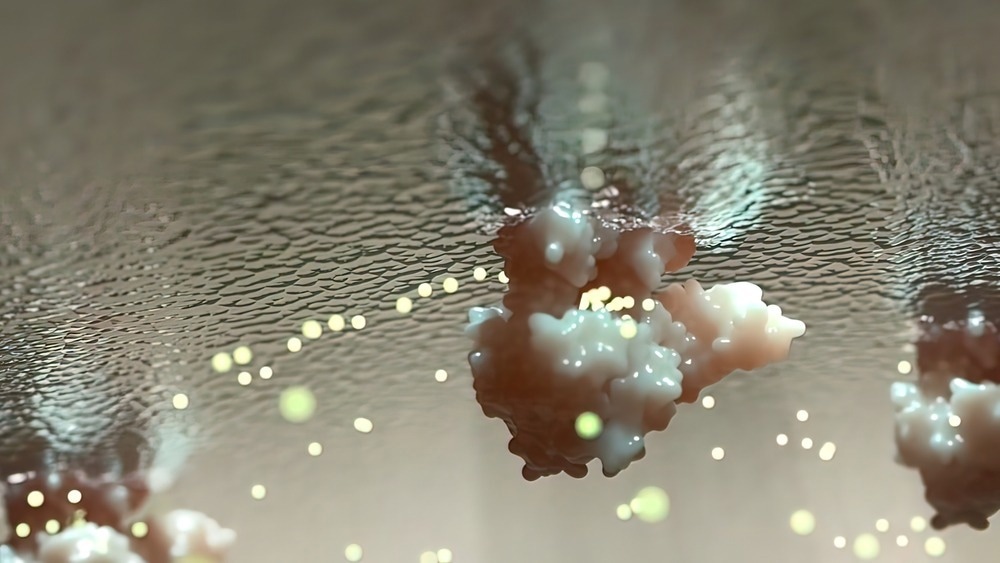In a paper recently published in the journal Biomaterials, researchers examined the challenges, synthesis techniques, and advances made in the development of decellularized extracellular matrix (dECM)-based biomaterials to imitate specific physical and biological characteristics of native tissue.

Study: Decellularized extracellular matrix: New promising and challenging biomaterials for regenerative medicine. Image Credit: picmedical/Shutterstock.com
Background
The native tissue group is composed of various cell types that are accompanied by an extracellular matrix (ECM). The ECM serves as a supportive and structural network, including a source of extracellular signaling molecules for residing cells. The ability to precisely recreate the physicochemical characteristics, or complex physical and biological attributes, of native ECM for fully functioning tissue recovery in regenerative medicine, has been a crucial challenge in tissue engineering (TE).
By offering a microenvironment similar to the native tissue, biomaterials made from dECM can support specialized types of cells as well as trigger their inherent regenerative process. dECM sheets were originally intended for complete tissue or organ regeneration and replacement. Decellularization, on the other hand, can substantially reduce the mechanical properties and structural stability of all dECM sheets. In this study, over 300 original research papers covering dECM-particle-based biomaterials released in peer-reviewed publications from January 2012 to December 2021 were reviewed by the team.
Advances in Main Types of Tissues in dECM TE
Cardiac TE aims to improve stem cell viability and retention by delivering vascularized, biodegradable patches with the conductivity, contractility, and elasticity of cardiac muscles to mimic the native cardiomyocyte (CM) niche. Cardiac-specific dECM biomaterials have been designed to mimic cardiac mechanics while also providing cues at key time points for differentiation of stem cells into CM and effective cardiac tissue repair. Cardiac dECM biomaterials may extend beyond cardiac hydrogels and patches to operate as an interim stent for vessel restoration.
Moreover, cartilage TE aims to rebuild the variable framework of cartilage zones so that loads can be distributed effectively without reinjury. Cartilage dECM is intended to induce chondrocytes to generate chondrogenesis or neocartilage ECM and may be included in three-zone scaffolds for long-term weight bearing. Furthermore, strategies for using neural TE in the treating of peripheral nerve injury (PNI), spinal cord injury (SCI), and stroke include developing biomaterials that aid in guiding axonal remyelination and regeneration, thus preventing cavitation, improving electrical signal conductivity, and increasing the transplanted cells' rate of survival.
Since adipose dECM has the natural ability to drive adipogenic differentiation of adipose stem cells (ASCs) and adipogenesis, it is a suitable choice for adipose TE scaffolds for ASC culture growth. Biomaterials made of skeletal muscle dECM (SM-dECM) are intended to mimic the striated arrangement of native muscles while also stimulating vasculogenesis and myogenesis. Biomaterials derived from the liver can provide the matrix cues required for an effective hepatocyte culture and anatomically ordered liver tissue regeneration. Design techniques in bone TE aim to create bioactive materials, which encourage differentiation of mesenchymal stromal cells (MSCs) into osteoblasts that are crucial for new bone formation.
Demineralized bone matrix particles (DBM) have been utilized to repair bone defects and promote osteoblast differentiation. Rather than DBM, bone dECM can drive osteogenesis and can be easily modified to fulfill defect needs without the hazards associated with foreign deoxyribonucleic acid (DNA).
When configured with different architecture and skin cells, the biomolecular cues present in skin dECM possess the capacity to recreate functional skin features. Lung TE has concentrated on two areas: distal lung drug transporters and whole lung replacements.
Progress in Other Tissue Types
Gastrointestinal (GI) dECM biomaterials have been developed for neo-ECM deposition stimulation and control chronic inflammation in radiation esophagitis and ulcerative colitis (UC)-damaged GI tracts. The major TE problems for GI dECM biomaterials involve recreating segment-specific muscle and mucosal layers, along with restoration of motility function for peristalsis of the gut tract. In a rat model, an injectable colon dECM hydrogel was studied in the colon mucosa repair in severe UC.
There have been attempts to use corneal dECM biomaterials to mimic the collagen fiber density and differential structural organization in the corneal layers, as well as change the corneal keratocytes' phenotypes while retaining optical viscoelasticity and transparency. Pancreatic dECM biomaterials have the ability to create a synthetic pancreatic microenvironment for the preservation of islets or differentiation of ß-cells.
Future Prospects
dECM biomaterial applications currently span a wide range of tissues, from scaffolds to patches, by matching physicochemical parameters and recreating whole organs. Current limitations could be overcome by improving the surface area for decellularization, matching cellular content and structures specific to the tissues, and using composites to enhance the mechanical stability of the dECM.
Biomaterials made of dECM particles are a great prospect for TE applications; nevertheless, the current dECM biomaterials have many limitations that must be overcome by lowering design and variability for tissue-specific uses. According to the authors, future research should focus on tissue-specific physicochemical characteristics in order to suit the mechanical, functional, and structural needs of the target tissue while also modulating the immune response.
More from AZoM: The Use of AI in Chemical Processes
Disclaimer: The views expressed here are those of the author expressed in their private capacity and do not necessarily represent the views of AZoM.com Limited T/A AZoNetwork the owner and operator of this website. This disclaimer forms part of the Terms and conditions of use of this website.
Source:
Brown M., Li J., Moraes C., Tabrizian M., Li-Jessen NYK., Decellularized extracellular matrix: New promising and challenging biomaterials for regenerative medicine, Biomaterials (2022), doi: https://www.sciencedirect.com/science/article/pii/S0142961222004264?via%3Dihub